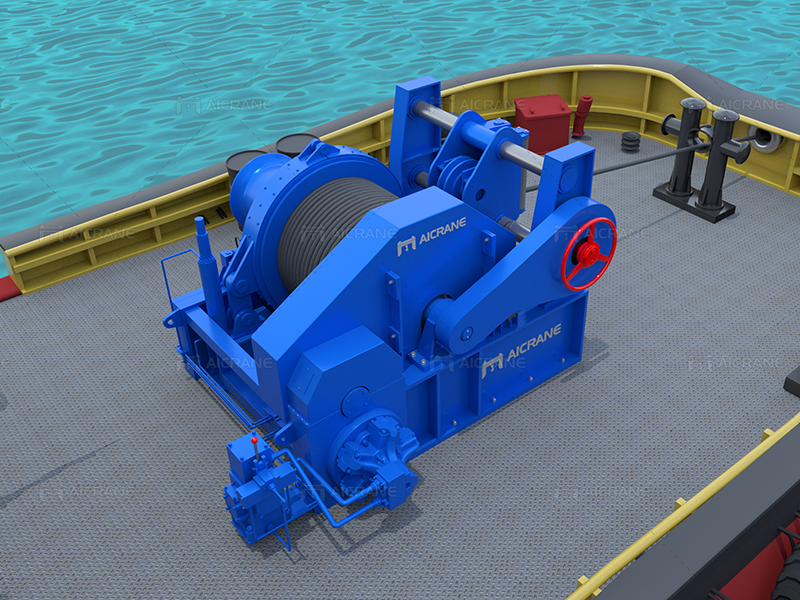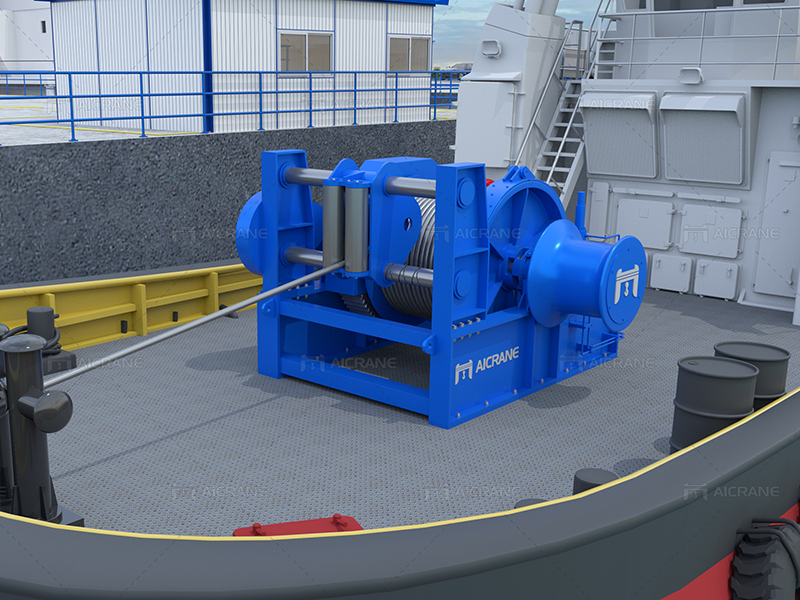Marine tugger winches play a crucial role in the maritime industry, providing the muscle needed to handle various operations on ships and offshore platforms. As these winches navigate the challenging waters of the open sea, they encounter a myriad of design challenges that demand innovative solutions. In this article, we explore the complexities of marine tugger winch design, highlighting the challenges faced by engineers and the cutting-edge solutions that propel the industry forward.

Challenges in Marine Tugger Winch Design
Harsh Environmental Conditions: The marine environment is notorious for its harsh conditions, including saltwater exposure, extreme temperatures, and corrosive elements. Designing tugger winches that can withstand these conditions without compromising performance and longevity poses a significant challenge. Corrosion-resistant materials and robust protective coatings are essential to combat the corrosive effects of saltwater.
High Load Demands: Tugger winches are often subjected to high load demands during towing, mooring, or lifting operations. Designing winches capable of handling these substantial loads while maintaining safety and efficiency is a constant challenge. Engineers must carefully select materials, incorporate high-torque motors, and employ advanced gearing systems to ensure optimal performance under heavy loads.
Space Constraints on Vessels: Vessel design often imposes space limitations, requiring tugger winches to be compact yet powerful. Engineers face the challenge of optimizing the winch’s size and weight without sacrificing functionality. Innovative design solutions, such as compact planetary gear arrangements and efficient motor configurations, are crucial to meeting space constraints without compromising power.
Dynamic Operational Requirements: The dynamic nature of marine operations demands tugger winches capable of rapid response and precise control. Challenges arise in designing winches that can seamlessly transition between different operational modes, such as towing, heaving, or positioning. Smart control systems and variable speed drives are essential components to address these dynamic operational requirements.
Safety and Reliability: Safety is paramount in maritime operations, and tugger winch design must prioritize reliability to prevent accidents and equipment failures. Ensuring fail-safe mechanisms, redundant systems, and thorough testing procedures are in place presents a challenge for engineers striving to meet stringent safety standards.

Solutions in Marine Tugger Winch Design
Advanced Materials and Coatings: To combat the corrosive effects of seawater, engineers are turning to advanced materials such as stainless steel, aluminum alloys, and composite materials. Additionally, the application of specialized coatings, including anti-corrosion coatings and marine-grade paints, enhances the longevity of winch components, protecting them from environmental wear and tear.
High-Strength Components: Addressing high load demands involves the use of high-strength materials for critical components like gears, shafts, and drums. Advanced alloys and heat treatment processes ensure these components can withstand the stress of heavy loads. The incorporation of high-strength synthetic ropes is also gaining popularity, offering a lightweight alternative with impressive strength characteristics.
Compact and Modular Design: Engineers are adopting compact and modular designs to overcome space constraints on vessels. By optimizing the arrangement of internal components and adopting modular configurations, winch manufacturers can provide versatile solutions that fit within the limited spatial parameters of marine vessels.
Intelligent Control Systems: To meet dynamic operational requirements, modern tugger winches are equipped with intelligent control systems. Variable frequency drives (VFDs) and programmable logic controllers (PLCs) allow for precise control of the winch, enabling smooth transitions between different operational modes. These smart systems enhance operational efficiency and contribute to overall safety.
Redundancy and Safety Features: Ensuring safety and reliability involves incorporating redundancy and advanced safety features into tugger winch designs. Redundant braking systems, emergency shutdown mechanisms, and comprehensive testing protocols are implemented to minimize the risk of equipment failure. Fail-safe designs and regular maintenance schedules further contribute to the overall safety and reliability of marine tugger winches.
Conclusion
In the ever-evolving world of marine tugger winch design, engineers face a multitude of challenges stemming from the harsh marine environment, high load demands, limited space, dynamic operational requirements, and the critical need for safety and reliability. However, the industry’s response to these challenges has been marked by ingenuity and innovation.
Advanced materials, compact designs, intelligent control systems, and a focus on safety are driving the evolution of marine tugger winch technology. As the maritime industry continues to advance, the collaboration between engineers, naval architects, and marine winch manufacturers will play a pivotal role in overcoming challenges and shaping the future of marine tugger winch design. Through these concerted efforts, the industry can navigate the seas with confidence, ensuring that marine tugger winches remain reliable, efficient, and resilient in the face of the toughest maritime challenges.